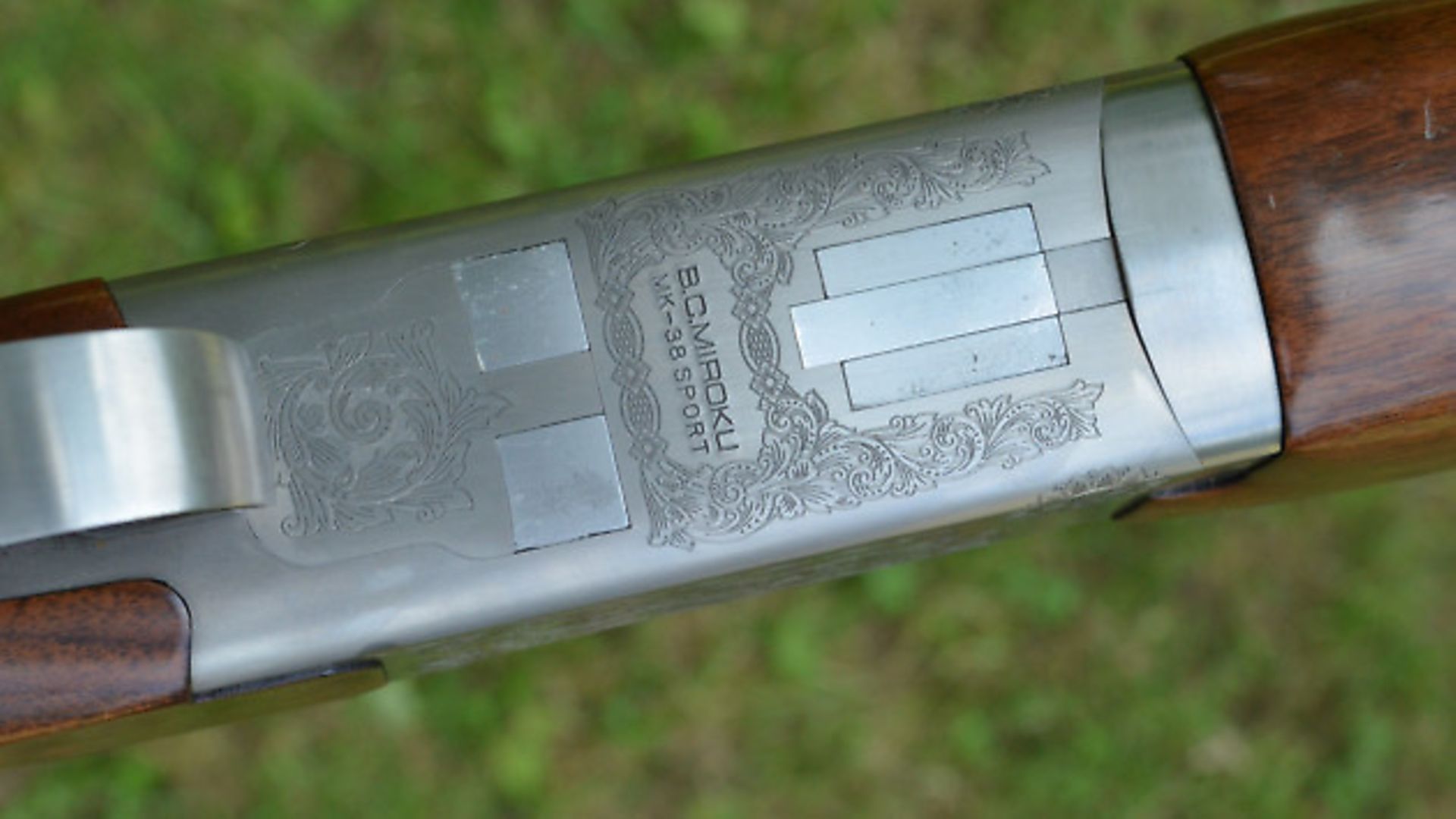Mike Yardley delivers a glowing review of the MK38 Teague Sporter
 credit: Mike Yardley
credit: Mike Yardley
Some guns just offer outstanding value and it is not giving too much of our game away to say this one, a Teague choked MK38 Miroku Sporter, is one of those. Taken from the shelves of
E.J. Churchill’s gun room near High Wycombe (my thanks to Chris and Rob), it is simply one of the outstanding guns in the British market – one of a few that stand out from the pack as offering quality, great design and lots of bang for the buck.
 credit: Mike Yardley
credit: Mike Yardley
The MK38 is an evolution of the 3800 model, and is made even better now by the back-bored barrels and Invector Plus fit Teague chokes. No secret then, first impressions are excellent – Miroku manages to maintain a standard of build consistency which few others match. This is a mid-weight gun, weighing in around the 7lb 8oz mark with 30” barrels fitted. There is a 32” option which is well worth considering if Sporting is your main activity – with the 30” tubes this qualifies as an all-rounder which could do double service well on a peg or in a hide. The stock is of classic Browning/Miroku shape, which means it is one of the best conceived and consequently much copied designs. The fore-end is of schnabel pattern, and I have taken that lip off for many clients to create an elegant rounded fore-end.
The barrels are impeccably made on the monobloc system with near invisible joints. Browning and Miroku guns were made with demi-bloc barrels for many years; they came around to monobloc construction later than others, but they do an outstanding job of it now.
Demi-bloc are considered superior in some quarters, but in practical shooting qualities, I have noted no difference whatsoever. And there is no aesthetic difference here either. Miroku (which makes many Brownings of course) does such a great job of barrel construction that the way the barrels are brought together does not make much, if any, real world difference. It is notable too that they do not use engraving to hide the joints, as many gunmakers do; there is nothing to hide.
The action is the typical Miroku variation of the Browning Superposed we have looked at often. There is a full-width cross pin and lumps beneath the barrels rather than the bifurcated/trunnion hinging system popular on the Continent (but copied from our own Woodward).
The orignal B25 was the last creation design of John Moses Browning. It is a classic and has been in production for 90 odd years. The predominant difference between a Japanese and Belgian Browning (the true B25 is still made in the Custom Shop at Herstal), is that the Japanese guns – whether they bear the Miroku or Browning name – do not have a fore-end which remains attached to the barrels on disassembly.
Consequently, the action is a little simpler to machine and the fore-end iron-work less complex too. This said, I actually prefer to have a detachable fore-end. The other advantage of the true B25 has been the lighter barrels, but this is less of an issue now as guns in the Miroku and Browning group have barrels that are not only back-bored in most cases but lightened too. I might add that I think barrel weight is a very signficant variable and many a fixed choke 3800 and MK38 have been selected because they always offered barrels which were relatively light for length.
The gun has an adjustable plain steel trigger and a good-sized barrel selector is positioned as per the norm on the sliding top strap safety in the usual place on the safety slide. Although the lumps are beneath the chambers rather than to the side of them, the general design of the gun still looks quite compact (though the new 725 Browning uses a similar set-up and manages to shave a bit more height off the action profile).
The gun locks up by means of a wide, flat bolt which comes out of the bottom of the action faces and mates with a slot beneath the bottom chamber mouth. It’s simple and strong, and still seen in many Italian guns that adopt a bifurcated (split) lump plan.
The stock on the Miroku impresses too. This is not because it is wonderfully figured, but because the shapes are good. It is nearly 15” long with a black pad. It suited me well, but also offers the opportunity to shorten by cutting wood (and at least it is there to cut) or lengthening by means of a pad or extension.
The drop on the stock was about 2¼” at heel, typical of Miroku and perhaps a little low. The grip shape is especially good, though, with an even depth assisting both recoil/flip and muzzle control because it makes it easier to hold on to. Classic, coil spring powered, Miroku hammer ejectors are carried in the fore-end. Checkering on the gun was set out in traditional panels
with well defined, neatly cut diamonds of quite large size, which offered good purchase.